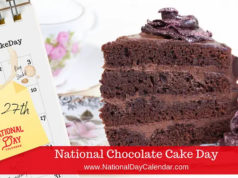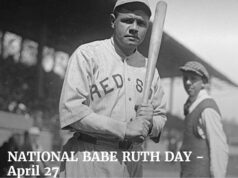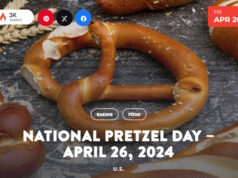
National Aviation Day on August 19th recognizes the pioneers of human flight. In 1939, President Franklin Delano Roosevelt established National Aviation Day by presidential proclamation designating the anniversary of Orville Wright’s birthday for the observance. Born August 19, 1871, Orville Wright was still living when President Roosevelt issued the proclamation. Orville Wright continued living for nine more years until his death in 1948.
- Inventors such as Leonardo da Vinci developed many ideas about flight. Gliders and balloons lifted humans into the sky, but none of the inventions gave a person control of where they flew.
- George Cayley used aerodynamics while designing fixed-wing aircraft. His designs would later inspire Orville and Wilbur Wright.
- Samuel Langley, an astronomer from Boston, designed a steam-powered model called an aerodrome in 1891. It flew for 3/4ths of a mile. After receiving a grant to build a full-sized aerodrome, Langley’s first test crashed. He never made another attempt.
- Two American inventors and aviation pioneers, the Wright brothers are credited with inventing and building the world’s first successful airplane and making the first controlled powered and sustained heavier-than-air human flight on December 17, 1903.
- The Boeing 747 wing span (195 feet) is longer than the Wright Brothers’ first flight of 120 ft.
- KLM Royal Dutch Airlines is the world’s oldest airline, established in 1919.
- In 1987, American Airlines saved $40,000 by removing one olive from each salad served in first class.
- Singapore Airlines spends approximately $700 million on food every year and $16 million on wine.
- The Internet and online check-in were first introduced by Alaska Airlines in 1999.
- At any given hour there are over 61,000 people airborne over the USA.
- American Airlines by switching a pilot’s paper manual to an iPad saved $1.2 million in fuel.
- Pilots and co-pilots are required to eat different meals in case of food poisoning
- In-flight oxygen masks aren’t intended to last the whole flight. According to a report from the Air Accident Investigation & Aviation Safety Board, those masks only provide 12 minutes of continuous airflow on a 737.
- The dirtiest place on the plane isn’t the bathroom. As it so happens, the filthiest place on a plane is that tray table you’re eating your meal off of.
- According to a study conducted by TravelMath, tray tables hosted 2,155 colony-forming bacterial units (CFU) per square inch. In comparison, the button to flush the toilet had just 265 CFU in the same amount of space.
- Sandra Bullock and about 2 million other Americans have aviophobia.
- 80% of the population has a Fear of Flying
- Only 5% of the World’s Population Have Been on an Airplane
- The first U.S. president to fly in an airplane was the adventurous Theodore Roosevelt, who flew in a Wright Flyer on October 11, 1910.
- Aircraft share the same navigation lights with water vessels, from tiny fishing boats to large container ships. You can find a red (port) light on the left wing and a green (starboard) light on the right wing to signal which way the plane is positioned.
- On New Year’s Day of 1914, the first scheduled passenger airline took its maiden flight. The route was a 34km hop across Tampa Bay in Florida, and the first passenger was the mayor of St Petersburg, Abram C. Pheil aboard a flying boat.
- An average Boeing 747 aircraft has over 150 miles (240 kilometers) of wires inside its body or roughly the distance between Amsterdam and the south of Belgium. The longest wiring, however, that can be found in an airplane is in the double-decker plane Airbus A380 — its 320 miles of cables would stretch as far as Leicester to Glasgow.
- The Boeing 747 jumbo jet is made up of six million parts
- Lufthansa purchases more caviar than any company on Earth. Their business and first-class passengers munch through 10 tons of it every year.
- At 12% humidity, the air in an airplane cabin is drier than most deserts.
- Airplanes were first used for mail delivery in the United States in 1918 when the first airmail flight went from Long Island to Philadelphia.
- The first passenger airliner that entered into the industry of commercial aviation was the Boeing 247 which was built in the early 1930s and carried 10 passengers at 155 miles per hour.
- 1st Century AD – Legend has it that Chinese Emperor Wang Mang ordered a soldier to strap two wings to his back, who then flew 100 meters.
- 9th Century AD – Abbas ibn Firnas is said to have covered himself with feathers, attached wings to his body and (according to Algerian historian Ahmed Mohammed al-Maqqari) “flew a considerable distance.”
- 1799 – Sir George Cayley, an English engineer, described the model for a modern airplane — a fixed-wing machine with lift, propulsion and control mechanisms.
- 1871 – August 19, 1871, Orville Wright was born in Dayton, Ohio. His older brother, Wilbur, had been born in Millville, Indiana, on April 16, 1867.
- 1903 – December 17, 1903, The Wright Brothers — with Orville at the helm and Wilbur making a final wing adjustment — completed the first sustained flight of a heavier-than-air aircraft on a spit of land four miles south of Kitty Hawk, North Carolina.
- A Boeing 747 without engine power can glide about two miles for every 1,000 feet or so that the plane is above the ground.
Sources:












